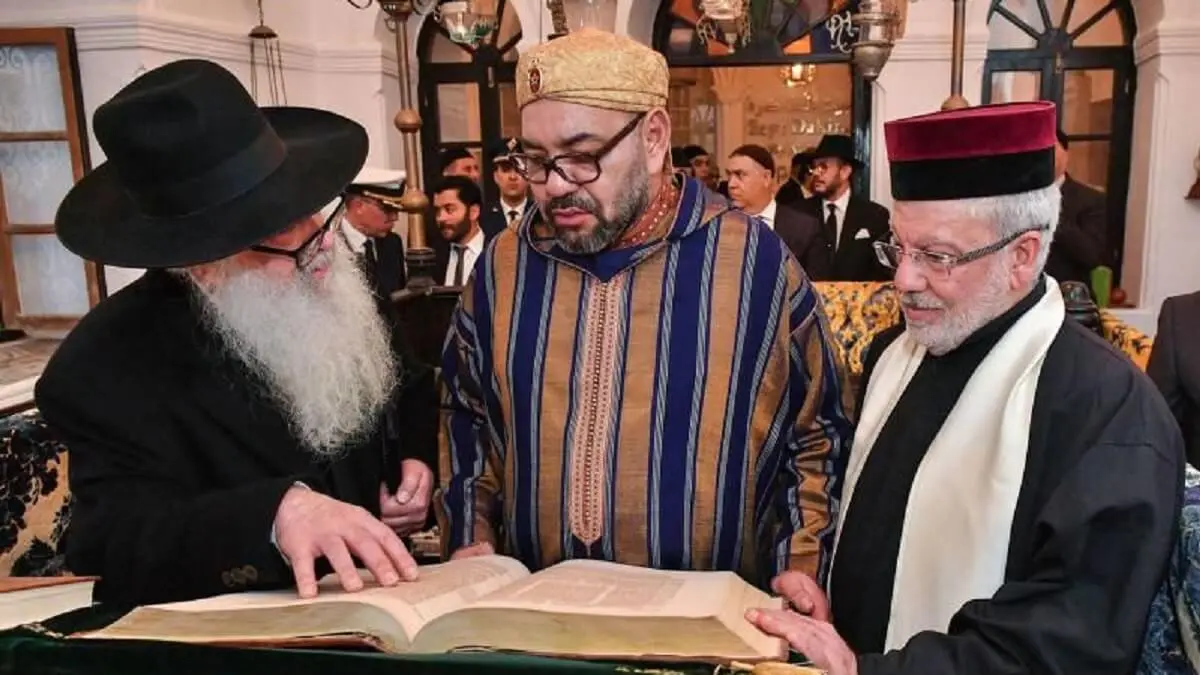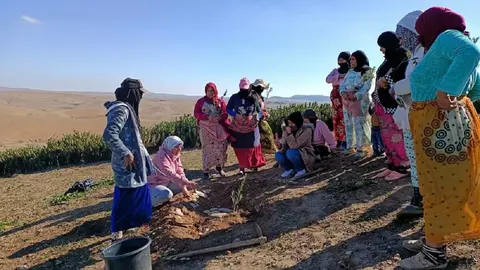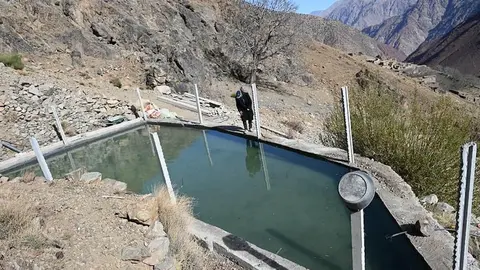In Morocco, Jewish-Muslim community spirit comes naturally

The High Atlas Foundation’s reburial of the beloved departed, upon request, is an honoured service that we perform with urgency
On the December 12 2024, I set out with four colleagues of the High Atlas Foundation (HAF) to meet members of the rural community of Tafza (Al Haouz province, Marrakech region), located in the mountain range that bore the horrendous epicentre of the September 2023 earthquake.
Unlike the countless visits that members of our Moroccan and US non-profit organisation have made to many hundreds of village communities in this area since that natural disaster, this recent December visit was of a different, yet still humanly essential, restoration purpose.
The president of the Moroccan Jewish community in Marrakech, Jacky Kadoch, followed by the authorisation of the provincial governing authorities, had asked that we perform a sacred duty at the Tafza Jewish cemetery. Our purpose that day was to gather and bury again the human remains that have emerged from the ground from the years of terrible erosion, likely exacerbated by the previous year’s earthquake.
The High Atlas Foundation’s reburial of the beloved departed, upon request, is an honoured service that we perform with urgency. HAF implements community development projects based on the local people’s collective will for initiatives that meet their individual and shared priorities.
Our outstanding expertise is in facilitating those introspective conversations that result in the peoples’, ‘the beneficiaries,’ action plan for the development they want most of all. For us, and this is underscored by global experience, projects endure and meet the people’s goals of their lives because of the community’s dedication to carrying them out. It is therefore vital that the reburial be done together with the people as close as possible to the historic mountain cemetery since doing so also holds importance for them.
The Sunni Muslim kingdom of Morocco’s care of Jewish cemeteries in all parts of the nation comes as naturally as the peoples’ identity itself may come. It requires no explanation, no persuasion, only the confirmation of a day and a time when men of all ages gather to restore what the collective community sees as part of their own indelible and revered past.
When we arrived that morning, roughly 30 people were already gathered with their tools to work across the 1,200-square-metre cemetery, picking up every bone they find, placing them in a cloth sack or covering (as per Moroccan Jewish and Muslim traditions), and re-bury them in a new grave that Tafza residents had dug, lined with brick, and built to endure for the next millennia.
As we walked together with Tafza people in all parts of the cemetery with our eyes to the ground, we also spoke about the work needed to redress and end the erosion of this crumbling mountain slope. We identified the critical points at which to add and level soil and plant non-bearing fruit trees in a manner allowed by Jewish custom. We spoke about the three Jewish village communities who left the area several generations ago to which this circa 1,000-year-old cemetery belonged.
We went to the unmarked burial site of a revered rabbi, whose name this adult generation of Tafza people no longer recall. Most locals who knew about this cemetery, great grandparents of today’s farming families, are no longer alive.
We dealt with the pressing bone reburial, but a huge amount of restoration work remains. Even with the highly commendable national initiative of the Moroccan Jewish community led by Serge Berdugo with financial backing from the Moroccan government following royal instructions that restored 167 Jewish cemeteries, a large number still requires attention.
The Moroccan government representatives’ presence that morning was warm, helpful and kind. It felt as if all together we had created that day a sub-community of Moroccan protectors of the past and future. It is a Moroccan-Jewish custom at the anniversary of the passing of their righteous ones (the occasion referred to as a hiloula) to eat together and enjoy a shared moment of bounty.
On that December day, it was not an anniversary of anyone passing, though it might have been. But we did break bread, dipped it in local raw honey and olive oil, drank tea made with local herbs, and shared a moment atop infinite previous moments of Moroccan Muslim and Jewish people from government, civil society and small businesses, from town and country, completing something that was calling to be done.
We brought before all of our eyes the miracles and blessings of Morocco that find their way into our daily affairs. It explains for me, as well as I have been able, that to serve in Morocco is to never let go.
Dr Yossef Ben-Meir is a sociologist, a former Peace Corps Volunteer who served in the High Atlas Mountains 30 years ago, and President of the High Atlas Foundation in Morocco.



